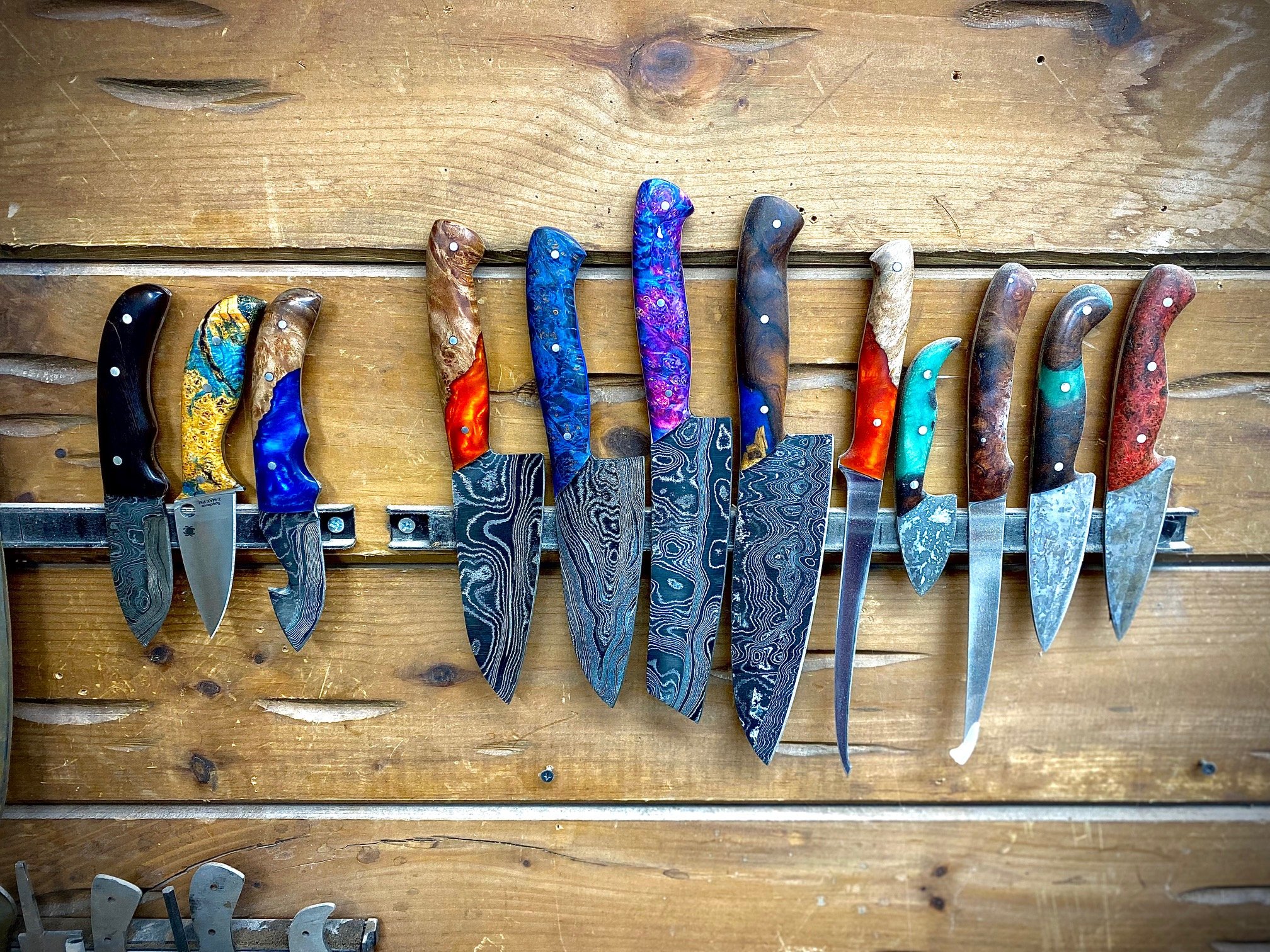
Knife Maintenance
What is Damascus Steel
Damascus Steel or pattern welding is a unique and beautiful steel forging technique. It was developed long ago, in the middle east, and made famous by legendary swordsmith in feudal Japan. The traditional samurai sword was forged using this technique. The end result creates distinctive patterns and no two blades are the the same.
The process of creating a finished damascus steel billet starts with 2 types of high carbon steel, that are welded together and placed into a forge to be bonded molecularly by the heat of the fire. Then the steels are smashed together by either hand hammers or a hydraulic press. After the steel is thin enough, the blacksmith then folds this piece of steel onto itself. This process is repeated many times until the blacksmith created hundreds, if not thousands of layers of the two types of steel. After the steel is completed and cools, the steel is cut into pieces to be used for the knife making process, which would be a damascus steel bar. Then the knife maker etches a design into the steel and begins to grind out the pattern of the design. The final step for the damascus steel is a acid etching bath. This will bring out the contrast of the two steels, making the damascus lines visible.
MAINTENANCE
Oiling is very important with any high carbon steel. If you are using your knife for decoration oiling once a year is a good idea. If you are using it for hunting, cooking, or for utility, I would suggest oiling once a month. Mineral oil works best, it’s cheap and doesn't go rancid like some other oils.
Polishing is a great way to keep your knife looking great! To polish, use a soft, non-abrasive polishing cloth with whitening toothpaste. Take care not to let water build up on the steel.
Sharpening will be mandatory if you are using your knife regularly. If you're not experienced I suggest this being done by a professional.
Please do not wash your knife in a dishwasher, hand wash & dry only.
